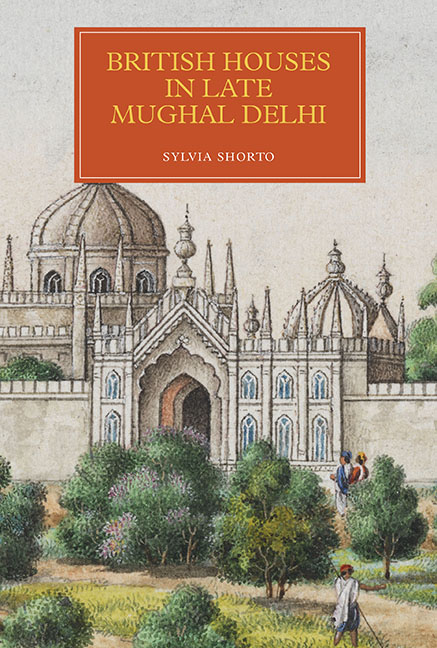Book contents
- Frontmatter
- Dedication
- Contents
- List of Illustrations
- Preface and Acknowledgements
- Abbreviations
- Glossary
- Map
- Chapter 1 Knowledge of Delhi: The Eighteenth Century
- Chapter 2 Hybrid Accommodations: David Ochterlony, the First Residency and the Mubarak Bagh
- Chapter 3 A Lovely Wilderness: Charles Metcalfe and the Garden Houses at Shalimar
- Chapter 4 Truly Fairy Palaces: Robert Smith in Delhi and in Europe
- Chapter 5 The World Displayed: William Fraser and his House on the Hill
- Chapter 6 A Tomb with View: Thomas Theophilus Metcalfe's Dilkusha
- Chapter 7 Dreaming of Home
- Bibliography
- Index
- Miscellaneous Endmatter
Preface and Acknowledgements
Published online by Cambridge University Press: 07 July 2018
- Frontmatter
- Dedication
- Contents
- List of Illustrations
- Preface and Acknowledgements
- Abbreviations
- Glossary
- Map
- Chapter 1 Knowledge of Delhi: The Eighteenth Century
- Chapter 2 Hybrid Accommodations: David Ochterlony, the First Residency and the Mubarak Bagh
- Chapter 3 A Lovely Wilderness: Charles Metcalfe and the Garden Houses at Shalimar
- Chapter 4 Truly Fairy Palaces: Robert Smith in Delhi and in Europe
- Chapter 5 The World Displayed: William Fraser and his House on the Hill
- Chapter 6 A Tomb with View: Thomas Theophilus Metcalfe's Dilkusha
- Chapter 7 Dreaming of Home
- Bibliography
- Index
- Miscellaneous Endmatter
Summary
During the years I have been gathering material for this book, I have seen extraordinary changes take place in the city of Delhi. To be sure, the city and its surrounding countryside have always been in flux, with observers ready to express concern about how the future might differ from the past. In a letter written in 1821, for instance, William Linnaeus Gardner, who had married into the Mughal aristocracy, worried about proposed British modifications to local land settlements and about how the excessive taxes and rigid tenancy regulations then being introduced by the agents of the East India Company would ‘ruin and destroy the old hereditary families’. His was just one voice in the longer stream of time, and his voice was ignored. Yet nothing from that period in history can compare to the rapid changes that a post-Independence Delhi is experiencing in the twenty-first century, making accurate narration of the many histories of this great city all the more important in the present moment.
Land and houses are inextricably linked. This book is about houses built by a group of East India Company officials between 1803 and 1853, during the transitional period when the Company first arrived in Delhi. It is about how houses were planned and built, and how the land for building them was acquired. It is about the ways the houses both related to and resisted established architectural conventions, both those in the city of Delhi and those in the minds of the incoming Company officials who would now use building to help secure their power. It is about meaning in the location of these houses.
The book straddles disciplines. In one sense, it is a work of architectural history, and as such it draws on early studies in the field that considered formal or functional variations to European precedent and assumed transplanted versions of an architectural core into an Indian periphery. It also references more recent critical texts, including interpretive work on architecture as material culture, not yet applied to building in early-nineteenth-century Delhi. But facts and interpretation must be in accord if interpretation is to have lasting value. When we examine a house closely, it can tell us a great deal about the mentalities of the people who built, owned or lived in it.
- Type
- Chapter
- Information
- British Houses in Late Mughal Delhi , pp. xiii - xviPublisher: Boydell & BrewerPrint publication year: 2018

